-
 Bitcoin
Bitcoin $118100
0.44% -
 Ethereum
Ethereum $3765
5.84% -
 XRP
XRP $3.498
3.12% -
 Tether USDt
Tether USDt $1.000
0.00% -
 BNB
BNB $753.2
3.41% -
 Solana
Solana $181.7
3.58% -
 USDC
USDC $0.9999
0.01% -
 Dogecoin
Dogecoin $0.2704
12.75% -
 Cardano
Cardano $0.8684
5.85% -
 TRON
TRON $0.3151
-0.86% -
 Hyperliquid
Hyperliquid $46.06
4.51% -
 Stellar
Stellar $0.4695
2.48% -
 Sui
Sui $3.910
3.18% -
 Chainlink
Chainlink $19.36
6.65% -
 Hedera
Hedera $0.2750
3.99% -
 Bitcoin Cash
Bitcoin Cash $544.6
6.31% -
 Avalanche
Avalanche $25.12
3.69% -
 Shiba Inu
Shiba Inu $0.00001559
5.40% -
 Litecoin
Litecoin $116.8
5.10% -
 UNUS SED LEO
UNUS SED LEO $8.991
0.05% -
 Toncoin
Toncoin $3.283
2.79% -
 Polkadot
Polkadot $4.509
3.97% -
 Uniswap
Uniswap $10.67
6.58% -
 Ethena USDe
Ethena USDe $1.001
-0.01% -
 Monero
Monero $323.2
0.48% -
 Pepe
Pepe $0.00001410
6.37% -
 Bitget Token
Bitget Token $4.964
1.93% -
 Dai
Dai $0.9998
-0.01% -
 Aave
Aave $326.2
3.85% -
 Bittensor
Bittensor $421.8
2.46%
What is the custody risk for a Bitcoin ETF?
Bitcoin ETFs offer investors exposure to Bitcoin without direct ownership, but custody risk remains a key concern as assets are held by third-party custodians.
Jul 20, 2025 at 02:35 pm
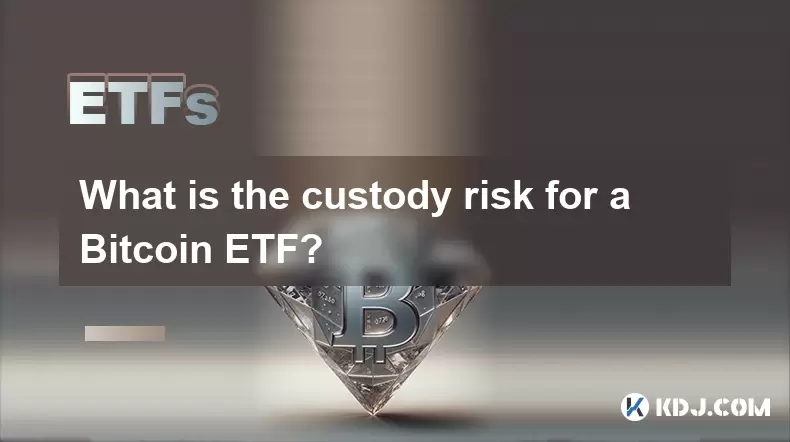
Understanding Bitcoin ETFs and Their Significance
A Bitcoin Exchange-Traded Fund (ETF) is a financial product that aims to track the price of Bitcoin without requiring investors to directly own the cryptocurrency. These funds are traded on traditional stock exchanges, making them accessible to a broader audience. One of the key concerns surrounding Bitcoin ETFs is custody risk, which refers to the potential dangers associated with how the underlying Bitcoin is stored and managed by third-party custodians.
Investors who opt for a Bitcoin ETF do not hold the private keys to the digital assets. Instead, they rely on institutional custodians to securely store the Bitcoin backing the fund. This introduces a unique set of risks that differ from those encountered when individuals manage their own crypto holdings.
Custody risk primarily involves the possibility of loss due to theft, mismanagement, or regulatory seizure of the stored Bitcoin.
The Role of Custodians in Bitcoin ETFs
In the context of a Bitcoin ETF, a custodian is a trusted entity responsible for holding and safeguarding the actual Bitcoin reserves that underpin the ETF shares. These custodians can be banks, specialized digital asset firms, or other regulated institutions. The reliability and security measures employed by these custodians play a critical role in mitigating custody risk.
Some of the responsibilities of custodians include:
- Storing private keys in secure environments
- Implementing robust cybersecurity protocols
- Ensuring compliance with regulatory requirements
- Facilitating audits and transparency
The choice of custodian directly impacts the level of trust investors place in the ETF structure.
Potential Threats to Custodied Bitcoin Assets
Despite best efforts, custodians face multiple threats that could compromise the safety of the Bitcoin they hold. These include:
- Cyberattacks: If a custodian's systems are breached, hackers may gain access to private keys and steal large amounts of Bitcoin.
- Internal Fraud: Employees or insiders might collude to siphon off assets or manipulate records.
- Regulatory Seizure: In some jurisdictions, authorities may freeze or confiscate assets held by custodians during investigations or legal proceedings.
- Technical Failures: System outages, software bugs, or human errors can result in temporary or permanent loss of access to Bitcoin.
Each of these scenarios poses a significant threat to investor confidence and asset integrity.
How Custody Risk Differs from Self-Custody Risks
When individuals hold their own Bitcoin using wallets, they bear the full responsibility for securing their private keys. This is known as self-custody and comes with its own set of risks such as lost keys, phishing attacks, or device compromises.
However, in the case of a Bitcoin ETF, the burden of custody shifts to the institution. While this removes the need for individual investors to manage complex security practices, it also centralizes risk within the custodian’s infrastructure.
- With self-custody, the user has full control but bears all responsibility.
- With ETF-based custody, the user gains convenience but must trust the custodian.
This trade-off between control and convenience is at the heart of the custody risk debate.
Security Measures Employed by Institutional Custodians
To mitigate custody risk, reputable custodians implement advanced security mechanisms, including:
- Cold Storage Solutions: Keeping the majority of Bitcoin offline to reduce exposure to cyber threats.
- Multi-Signature Wallets: Requiring multiple approvals before transactions can be executed.
- Insurance Coverage: Providing insurance policies that cover losses from theft or breaches.
- Regular Audits: Conducting third-party audits to verify asset holdings and operational integrity.
- Regulatory Compliance: Adhering to local and international financial regulations to ensure accountability.
These measures aim to instill trust while minimizing the chances of asset loss.
Frequently Asked Questions
Q: Can custody risk be completely eliminated in Bitcoin ETFs?
A: No system is entirely risk-free. While custodians employ advanced safeguards, risks such as cyberattacks, internal fraud, or regulatory actions cannot be fully eliminated.
Q: How does custody risk affect ETF pricing?
A: If there is perceived risk around the custodian’s ability to protect assets, investor confidence may drop, potentially leading to lower demand and a discount in ETF share prices relative to Bitcoin’s market value.
Q: Are ETF custodians subject to regular audits?
A: Yes, most institutional-grade custodians undergo periodic audits by independent firms to verify asset reserves and assess security protocols.
Q: What happens if a custodian goes bankrupt?
A: In such cases, the Bitcoin held in custody should remain separate from the custodian’s own assets and be protected under bankruptcy laws, depending on jurisdiction and legal frameworks.
Disclaimer:info@kdj.com
The information provided is not trading advice. kdj.com does not assume any responsibility for any investments made based on the information provided in this article. Cryptocurrencies are highly volatile and it is highly recommended that you invest with caution after thorough research!
If you believe that the content used on this website infringes your copyright, please contact us immediately (info@kdj.com) and we will delete it promptly.
- NFT Performers in Flux: Pudgy Penguins, Courtyard, and the Shifting Sands of the Market
- 2025-07-21 10:30:12
- Decoding HKMA's Stablecoin Licensing System: A New Era for Digital Assets?
- 2025-07-21 10:50:11
- Address, CryptoPunks, NFTs: What's the Buzz?
- 2025-07-21 10:50:11
- Ethereum, Crypto, and Market Moves: What's the Deal?
- 2025-07-21 11:30:11
- CoinDCX Hack: A Wake-Up Call for Crypto Security
- 2025-07-21 11:35:12
- Dogecoin & Meme Coins in 2025: Hype or Hyper-Growth?
- 2025-07-21 08:30:12
Related knowledge

What is the best platform to trade Bitcoin ETFs?
Jul 17,2025 at 03:50pm
Understanding Bitcoin ETFs and Their Role in the MarketBitcoin Exchange-Traded Funds (ETFs) are investment vehicles that track the price of Bitcoin wi...
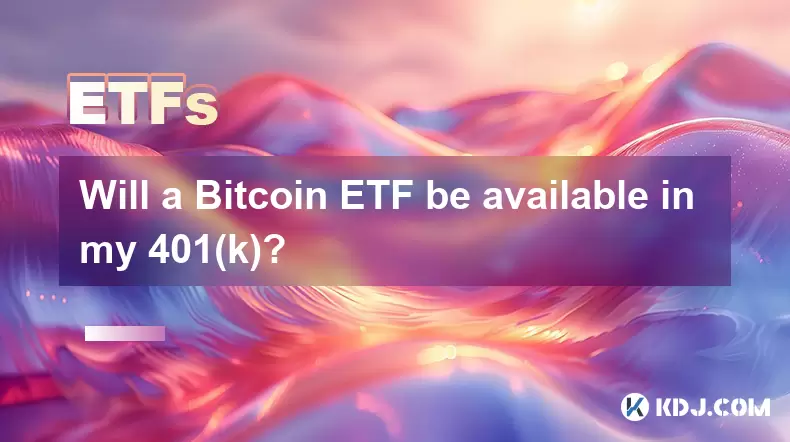
Will a Bitcoin ETF be available in my 401(k)?
Jul 17,2025 at 10:42pm
What is a Bitcoin ETF?A Bitcoin ETF (Exchange-Traded Fund) is an investment vehicle that tracks the price of Bitcoin without requiring investors to di...

Who is the authorized participant for a Bitcoin ETF?
Jul 18,2025 at 12:42am
Understanding the Role of Authorized Participants in Bitcoin ETFsIn the context of Bitcoin Exchange-Traded Funds (ETFs), an authorized participant (AP...
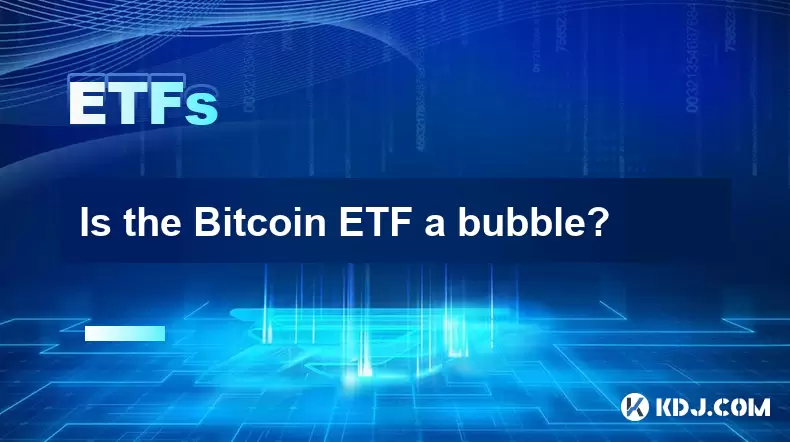
Is the Bitcoin ETF a bubble?
Jul 20,2025 at 06:57am
Understanding the Bitcoin ETF ConceptA Bitcoin Exchange-Traded Fund (ETF) is a financial product that aims to track the price of Bitcoin without requi...
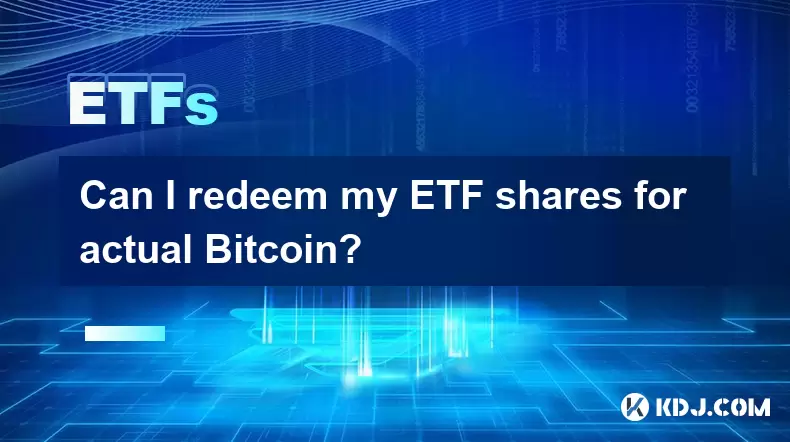
Can I redeem my ETF shares for actual Bitcoin?
Jul 17,2025 at 03:14pm
Understanding ETF Shares and Their Relation to BitcoinExchange-Traded Funds (ETFs) have become a popular investment vehicle for those looking to gain ...
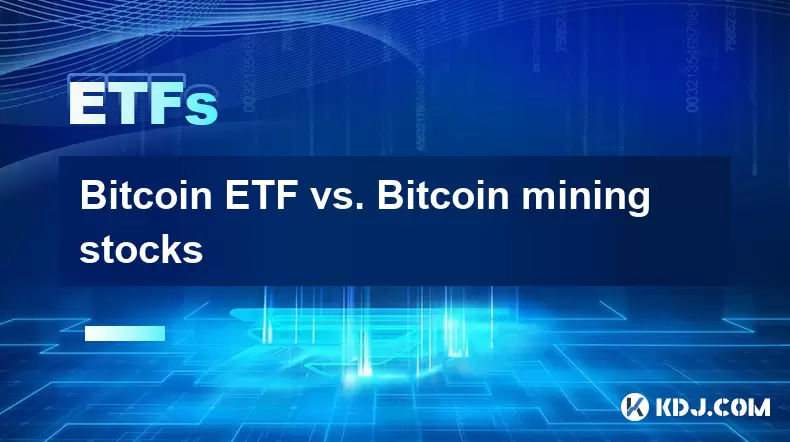
Bitcoin ETF vs. Bitcoin mining stocks
Jul 18,2025 at 04:08pm
What is a Bitcoin ETF?A Bitcoin Exchange-Traded Fund (ETF) is an investment vehicle that tracks the price of Bitcoin and trades on traditional stock e...

What is the best platform to trade Bitcoin ETFs?
Jul 17,2025 at 03:50pm
Understanding Bitcoin ETFs and Their Role in the MarketBitcoin Exchange-Traded Funds (ETFs) are investment vehicles that track the price of Bitcoin wi...

Will a Bitcoin ETF be available in my 401(k)?
Jul 17,2025 at 10:42pm
What is a Bitcoin ETF?A Bitcoin ETF (Exchange-Traded Fund) is an investment vehicle that tracks the price of Bitcoin without requiring investors to di...

Who is the authorized participant for a Bitcoin ETF?
Jul 18,2025 at 12:42am
Understanding the Role of Authorized Participants in Bitcoin ETFsIn the context of Bitcoin Exchange-Traded Funds (ETFs), an authorized participant (AP...

Is the Bitcoin ETF a bubble?
Jul 20,2025 at 06:57am
Understanding the Bitcoin ETF ConceptA Bitcoin Exchange-Traded Fund (ETF) is a financial product that aims to track the price of Bitcoin without requi...

Can I redeem my ETF shares for actual Bitcoin?
Jul 17,2025 at 03:14pm
Understanding ETF Shares and Their Relation to BitcoinExchange-Traded Funds (ETFs) have become a popular investment vehicle for those looking to gain ...

Bitcoin ETF vs. Bitcoin mining stocks
Jul 18,2025 at 04:08pm
What is a Bitcoin ETF?A Bitcoin Exchange-Traded Fund (ETF) is an investment vehicle that tracks the price of Bitcoin and trades on traditional stock e...
See all articles

























































































